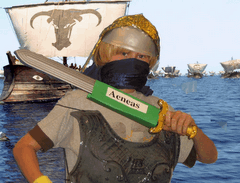
The
Journal of Computing in Teacher Education (Vol. 24/Number 2, Winter 07-08)recently published an issue that focused on some key aspects technology integration. It discussed the renewed and revised emphasis on the construct of something called TPACK that was recently formulated at the 9th Annnual National Technology Leadership Summit. The construct of TPACK helps to underscore the fact that teacher education, especially as it relates to technology integration, must interweave three vital areas of knolwedge: content knowledge, technological knowledge, and pedagogical knowledge, if it hopes to successfully train teachers to integrate technology into the curriculum.
The Journal article pointed out that the construct of TPACK captures two key aspects of technology integration. “First, it emphasizes, through the letters, the three kinds of knowledge (Technology, Pedagogy And Content) that we believe are essential building blocks for intelligent technology integration. Second, and as important, it captures the fact that these three knowledge domains should not be taken in isolation, but rather that they form an integrated whole, a ‘Total PACKage’ as it were, for helping teachers take advantage of technology to improve student learning.”
In the editorial article of the Journal's winter issue, authors Ann D. Thompson and Punya Mishra emphasized that “effective use of technology…involves the ability to make informed decisions on how to take advantage of the affordances of technology…to support specific pedagogies within a particular content area. Thus, teachers need the Total PACKage: the knowledge that lies at the intersection of knowledge of Content, Pedagogy And Technology i.e., TPACK.” They suggest that TPACK can become a shared descriptor of the “powerful ideas involved in creating a synergy among technology, content and pedagogy that honors the interdependence of these three important parts of teacher education and teaching.”
An article in the February 2008 issue of
Learning & Leading with Technology also discussed the new focus on TPACK, and provided the above visual from the online wiki of Matthew Koehler and Punya Mishra (
www.tpck.org).
Anita McAnear, author of the
Learning & Leading with Technology article, emphasized that the visual highlights the fact that “it is not enough to have general technological knowledge, and that staff development focused only on technology will not accomplish much. You can’t separate out content as it is affected by technology, and technology affects what is important to know and be able to do as well as providing tools.” Teacher education must interweave all three areas, content knowledge, technological knowledge, and pedagogical knowledge, if it hopes to successfully train teachers to integrate technology into the curriculum.
I completed my doctorate in Instructional Design for Online Learning in November 2007, and have an opportunity to present my research findings at an AACE Educational Media Conference in June in Vienna, Austria. At that time, I will unveil the new instructional design model I have developed that illustrates my new learning theory (SCCS). The new learning theory and instructional design model are based on my research findings regarding the ways in which technology has impacted the way students learn. I believe that this new learning theory and instructional design model can help to provide a clearer pedagogical picture that instructors can use as they weave content and technological knowledge into their technology integration.
A diagram of the new instructional design model can be found at:
http://tinyurl.com/3hh58u
 pedagogy19k Jigsaw Puzzle
pedagogy19k Jigsaw Puzzle






